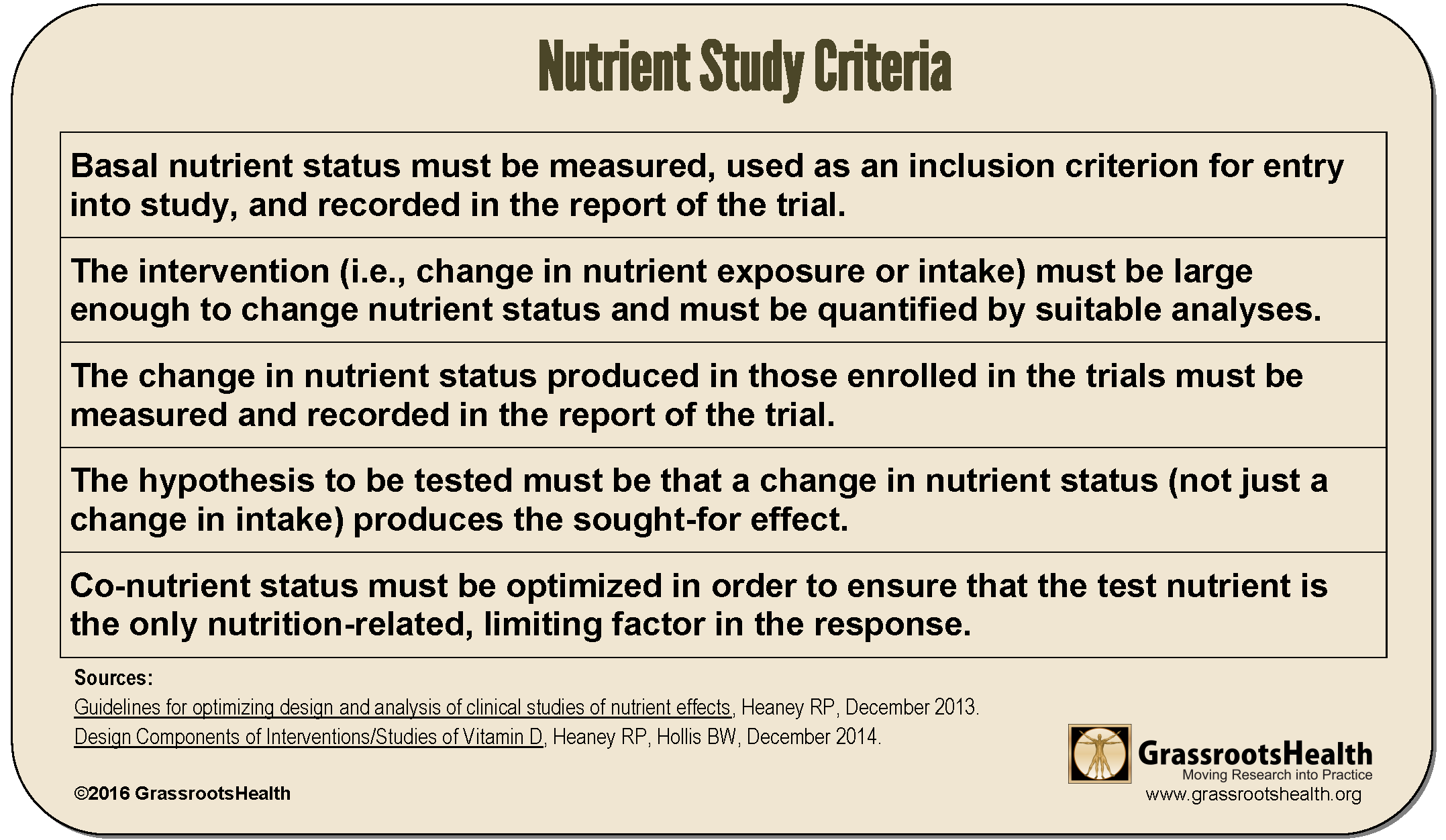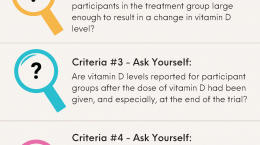Published on November 8, 2019
 Dr. Robert Heaney was the Research Director for GrassrootsHealth until his passing in 2016. During his professional years, Dr. Heaney provided nearly 50 years of advancements in our understanding of bone biology, osteoporosis, and human calcium and vitamin D physiology. At the same time, he engaged in nutritional policy issues and helped redefine the context for estimating nutrient requirements. Dr. Heaney provided some of this information in a webinar “Nutrition and Medicine: The Troubled Relationship,” in which he discusses some of what we now call the Heaney Criteria. These criteria were also published and described in detail in “Guidelines for optimizing design and analysis of clinical studies of nutrient effects.”
Dr. Robert Heaney was the Research Director for GrassrootsHealth until his passing in 2016. During his professional years, Dr. Heaney provided nearly 50 years of advancements in our understanding of bone biology, osteoporosis, and human calcium and vitamin D physiology. At the same time, he engaged in nutritional policy issues and helped redefine the context for estimating nutrient requirements. Dr. Heaney provided some of this information in a webinar “Nutrition and Medicine: The Troubled Relationship,” in which he discusses some of what we now call the Heaney Criteria. These criteria were also published and described in detail in “Guidelines for optimizing design and analysis of clinical studies of nutrient effects.”
Heaney Criteria: Guidelines for Nutrient Studies
A major, ongoing issue exists in vitamin D research, resulting in inconclusive findings from some studies looking at vitamin D and related health outcomes, especially in vitamin D replete populations. When looking at how these studies were conducted, and evaluating them using the Heaney Criteria, it starts to make sense as to why the results may not have been what was expected.
A recent review by Charoenngam et al. focuses on this issue, taking into consideration three recently published and highly publicized randomized controlled trials that looked at the effect of vitamin D on cardiovascular disease, cancer, all-cause mortality, type 2 diabetes, and bone health. The authors point out the main problem for each being the vitamin D serum levels for the participants at the start of the study – they were simply already too high to show a demonstrable change in outcome. These are all examples of nutrient studies that do not meet the Heaney Criteria, specifically the importance of including baseline nutrient status as inclusion criteria for entering the study.
Watch the Webinar
For a better understanding of the ongoing problem with nutrient research, we encourage you to watch the video presentation “Nutrition and Medicine: The Troubled Relationship” with Dr. Heaney. At around 10:37 he begins to describe why this particular criteria of paying attention to the starting vitamin D serum level is so important for each specific outcome being measured.
Remember, before accepting a nutrient research study’s conclusions, it is always important to first evaluate the study to see if it met each of the Heaney Criteria, especially if the study’s results were not what was expected.
How are your nutrient levels for health?
Make sure you know your vitamin D level, and take steps to keep it within a target of 40-60 ng/ml or 100-150 nmol/L! Through GrassrootsHealth Nutrient Research Institute, you can also test your essential elements magnesium, copper, zinc and selenium, toxins such as lead, mercury and cadmium, as well as your omega-3 levels, inflammation levels and thyroid stimulating hormone (TSH) level. Find out your levels today! Log on to the shop (click the link below) to get your tests and see for yourself if your level can be improved.
Make sure you track your results before and after, about every 6 months!
How can I track my nutrient intake and levels over time?
To help you track your supplement use and nutrient levels, GrassrootsHealth has created an online tracking system called myData-myAnswers. For each specific supplement, you can track what days you take it, how much, and many other details. This will help you know your true supplemental intake and what patterns of use work for you to reach and maintain optimum nutrient levels. Check it out today!









